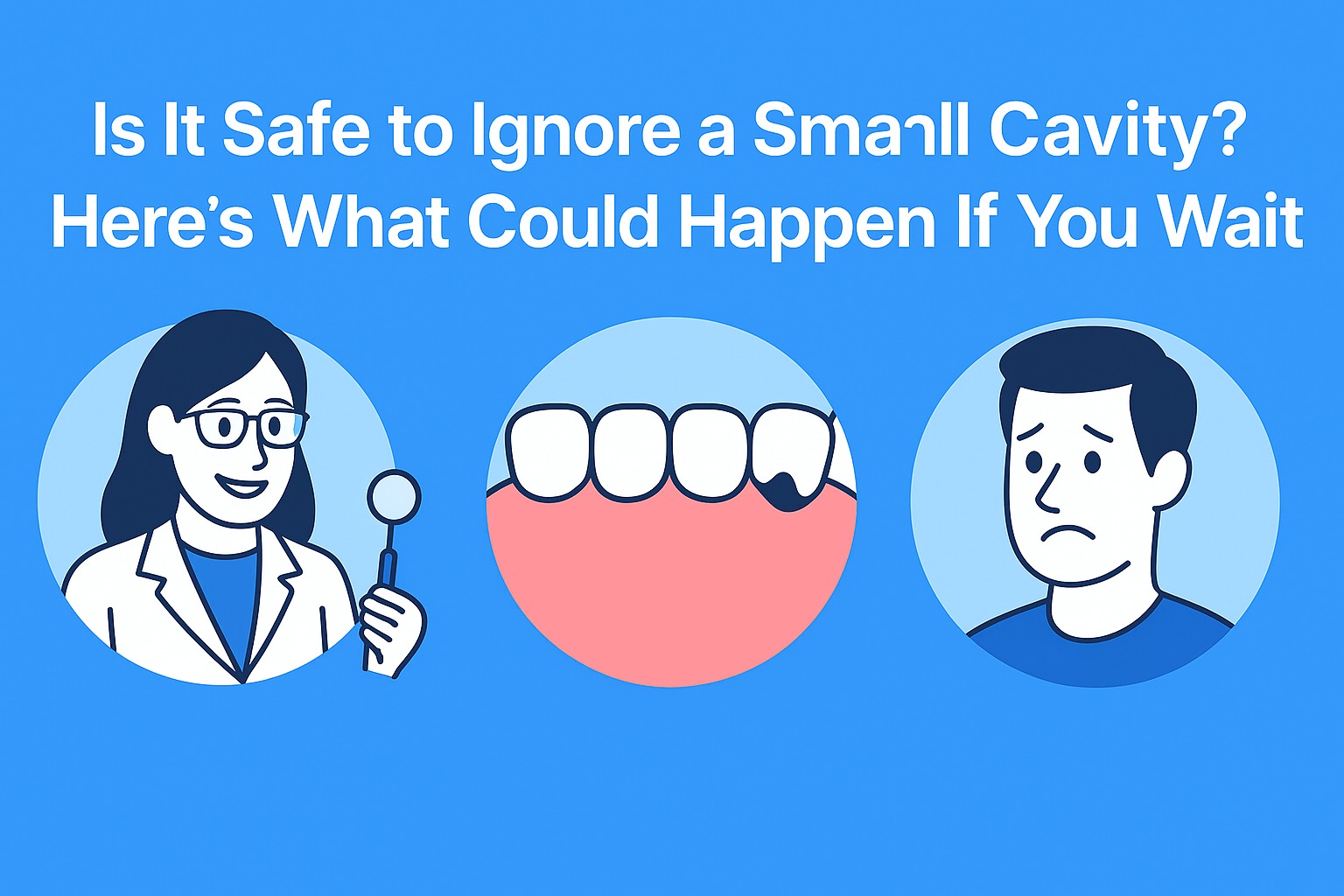Is It Safe to Ignore a Small Cavity? Here's What Could Happen If You Wait
- Home
- Blog
- Preventive Care
- Preventive Care
- Comments
Is It Safe to Ignore a Small Cavity? Here's What Could Happen If You Wait
It's just a small spot. It doesn't hurt. You can barely see it. Do you really need to fix it now?
This is one of the most common dental dilemmas patients face — but the truth is, a small cavity left untreated rarely stays small. Cavities are progressive, silent, and stubborn. By the time they hurt, they've already done significant damage.
At Dentinix, we see it all the time: what started as a minor cavity becomes a deep infection, requiring root canal treatment or even tooth extraction — all because it was ignored at the early stage.
Small Cavity Risks: What You Need to Know
What happens when you leave a small cavity untreated?
Why do cavities progress from painless to painful?
How can early detection prevent major problems?
What treatment options are available at different stages?
Why is preventive care better than reactive treatment?
What Happens When You Leave a Small Cavity Untreated?
Cavities are caused by bacteria that feed on food particles (especially sugars) and release acid. This acid slowly dissolves your enamel and moves deeper into your tooth layers.
| Stage | Symptoms | Treatment Required | Cost & Complexity |
|---|---|---|---|
| Enamel Decay (Painless) |
White or brown spot, no pain | Simple filling | Low cost, quick procedure |
| Dentin Invasion (Mild Sensitivity) |
Sensitivity to sweets, cold, brushing | Larger filling | Moderate cost, one visit |
| Pulp Involvement (Toothache Begins) |
Pain, constant or triggered by hot/cold | Root canal treatment | Higher cost, multiple visits |
| Abscess Formation (Swelling and Infection) |
Swelling in jaw/face, severe pain | Root canal + crown or extraction | High cost, complex treatment |
| Tooth Loss (Damage to Neighboring Teeth) |
Infection spread, bone loss | Extraction + implant/bridge | Highest cost, surgical treatment |
The progression from a small cavity to tooth loss can happen over months or years, but the damage is often irreversible once it reaches advanced stages.
Why Waiting Isn't Worth the Risk
The cost and complexity of treatment increases dramatically as cavities progress. Early intervention is always the best approach.
Treatment Comparison: Early vs. Late Intervention
Early Treatment (Small Filling):
Painless, quick procedure (30-60 minutes)
Affordable cost
Single visit
Preserves maximum tooth structure
Advanced Treatment (Root Canal + Crown):
Multiple visits required
Significantly higher cost
More complex procedure
May require additional treatments
Tooth Loss (Extraction + Replacement):
Surgical procedure
Highest cost
Affects neighboring teeth
May impact overall oral health
Even Painless Teeth Can Be Hiding Decay
The misconception that "if it doesn't hurt, it must be fine" is what leads to most dental emergencies. Decay can be quietly progressing under the surface for months.
Warning Signs You Shouldn't Ignore
White or brown spots on teeth
Sensitivity to hot, cold, or sweet foods
Visible holes or pits in teeth
Food getting stuck between teeth
Bad breath that doesn't improve with brushing
Dark spots or discoloration
This is why regular checkups and diagnostic tools like digital X-rays are essential — they help us catch decay before it becomes destructive.
How Dentinix Handles Small Cavities with Big Care
At Dentinix, we believe that early action is always better than reactive treatment. Our comprehensive approach ensures the best outcomes for our patients.
| Our Approach | Benefits |
|---|---|
| Advanced Detection | Magnification and digital tools to detect early decay |
| Minimally Invasive Treatment | Tooth-colored fillings that preserve natural appearance |
| Patient Education | Guidance on preventing further decay with diet and brushing |
| Preventive Care | Fluoride treatments, sealants, and regular cleaning |
| Monitoring | Track questionable areas to catch progression early |
Prevention: The Best Defense Against Cavities
While we excel at treating cavities at any stage, prevention is always our preferred approach.
Preventive Strategies at Dentinix
Regular Checkups: Every 6 months to catch issues early
Professional Cleanings: Remove plaque and tartar buildup
Fluoride Treatments: Strengthen enamel and prevent decay
Dental Sealants: Protect vulnerable areas from bacteria
Digital X-rays: Detect hidden decay between teeth
Oral Hygiene Education: Proper brushing and flossing techniques
FAQs: Small Cavities and Treatment
How long can I wait to treat a small cavity?
We recommend treating cavities as soon as they're detected. Even small cavities can progress quickly, especially if you have risk factors like dry mouth or frequent snacking.
Will a small cavity eventually hurt?
Yes, most cavities will eventually cause pain, but by then they've often reached an advanced stage requiring more complex treatment.
Can cavities heal on their own?
No, cavities cannot heal on their own. Once enamel is damaged, it needs to be restored with dental treatment.
How can I prevent cavities?
Regular brushing, flossing, limiting sugary foods, and visiting your dentist every 6 months are the best ways to prevent cavities.
Your mouth may not send loud signals — but that doesn't mean everything's fine inside. Small cavities are the perfect opportunity to intervene early, preserve your tooth, and avoid pain or complications later. At Dentinix, we believe in proactive care that saves you time, money, and discomfort in the long run.
Don't Wait Until It Hurts
If it's been a while since your last checkup, or if you've spotted a dark spot on your tooth, don't wait.
📍 Visit us at Dentinix, Sarjapur Road, Bangalore
🌐 www.dentinix.com
📞 Call us to schedule your preventive checkup today

